Your next iPhone won’t be stamped Made in America. But pry open the casing in 2025 and you may see semiconductor chips that were etched into silicon in the Arizona desert.
While it will be scorching outside, the Phoenix “fab” gearing up to produce
Apple’s
(ticker: AAPL) chips will be cool, clean, and cutting-edge.
Taiwan Semiconductor Manufacturing
(TSM) is plowing $40 billion into the project, aiming to crank out 600,000 wafers a year. Apple CEO Tim Cook, at a “tool in” ceremony last year, said Apple would be “proud” to be the fab’s biggest customer.
That’s no coincidence. Apple is TSMC’s largest source of business, worth billions in annual revenue. Apple is looking for chip security, among many companies seeking to shore up supplies amid rising geopolitical tensions and fears over disruptions.
War breaking out between Israel and Hamas is just the latest worry for multinational companies. Russia’s invasion of Ukraine and escalating tensions between the U.S. and China are fragmenting global trade. Disruptions in chip supplies from the pandemic remain fresh. A global race is now on by companies and governments to secure supplies of chips that are critical to both their industrial strength and their militaries.
No company is caught in the crosscurrents more than TSMC. Producing the vast majority of advanced semiconductors in Taiwan, TSMC is the lifeblood for tech’s new applications like artificial intelligence and advanced military weaponry. Taiwan, of course, is a geopolitical flashpoint between the U.S. and China, which claims the island as its territory, while the U.S. has indicated that it would defend the island in the event of an invasion or attack.
Both for its security and customers like
Nvidia
(NVDA) and Apple, TSMC is building several plants overseas, with Arizona as a prototype. “Arizona is the first trial of our overseas megasite development,” said TSMC Chairman Mark Liu at a conference in Taiwan in September. The buildout is a “learning process,” he added, expressing confidence that it will be a “very successful project.”
Behind the scenes, Apple played a role in luring TSMC, according to some analysts, who said the iPhone maker leaned on the chip maker in a way only it could.
“It was like the Godfather made an offer you couldn’t refuse,” says Dan Hutcheson, vice chair of TechInsights, a semiconductor research firm. Apple threatened it might go elsewhere for chip supplies if TSMC didn’t come through with a U.S. plant, he said. And Cook “was instrumental” in getting former President Donald Trump to promise U.S. financial support.
TSMC, in a statement to Barron’s, said that “many factors” went into building in Arizona, adding, “The U.S. government also supported our decision to invest here.” Apple declined to comment.
Making Chips in the Desert
Fueled by concerns about China, the U.S. has adopted the most friendly industrial chip policy in a generation. The 2022 Chips and Science Act included $39 billion in grants for manufacturing and 25% tax credits for construction. States such as Arizona, Texas, New York, and Ohio are also throwing in subsidies, aiming to capture economic gains from a chip revival.
TSMC is now leading a wave of U.S. manufacturing, including companies like
Intel
(INTC),
GlobalFoundries
(GFS), and
Samsung Electronics
(005930.Korea), which are vying for billions in subsidies. More than $200 billion of investment has been committed by chip makers, according to the Semiconductor Industry Association.
Yet places like Arizona—water-thirsty and far from TSMC’s highly efficient production in Asia—are hardly ideal for new fabs. “In Taiwan, TSMC is treated almost like royalty,” says Kirk Yang, chairman of Kirkland Capital, based part-time in Taiwan. “In Arizona, they’re just one of the good guys.”
A spokesperson for TSMC said that it would be more expensive to build in Arizona than Taiwan, “largely due to higher costs associated with construction and facility operations.”
So far, it has been a slog. Construction is going slow with mass production now expected to start in late 2025, nearly a year behind schedule, according to
JPMorgan Chase
(JPM) analyst Gokul Hariharan. Labor problems have piled up as TSMC vies with Intel and other tech companies expanding in the state. Difficulty with tool installation, uncertainty over subsidy payments, and weak demand for advanced processors are also contributing to delays, according to Hariharan.
Indeed, TSMC is building in Arizona amid a global chip downturn. Industrywide sales are expected to fall 10% from 2022 levels to $515 billion this year, according to the Semiconductor Industry Association. A recovery is expected next year, with AI stoking demand. But growing U.S. restrictions of chip exports to China are weighing on the market, with China accounting for 36% of sales for U.S. chip companies.
All of it is taking a toll on TSMC’s finances. Along with a new fab in Arizona, TSMC is building plants in Germany, Japan, and mainland China. The company is aiming for $92 billion through 2025 in capital expenditure, according to consensus forecasts. Its capex as a percentage of sales has risen and is denting free cash flow, which is expected to fall 22% this year to $12.3 billion before recovering to $20.5 billion in 2024.
Some analysts say that TSMC decided to build in Arizona more for political than economic reasons. “It was not a business decision,” says Needham analyst Charles Shi.
The business case makes more sense now that tensions with China have risen, pressuring customers like Apple, Nvidia, and
Advanced Micro Devices
(AMD) to branch out from Taiwan. But TSMC may be slow-walking construction in Arizona because it’s struggling to fill capacity in Taiwan, Shi says. The company now has global capacity for 16 million to 17 million wafers but may have trouble selling it all without a big sales revival. “That’s why they’re not really in a hurry to turn on Arizona,” he says.
One skeptic on the economics of Arizona appears to be Morris Chang, TSMC’s founder and former chairman. In a podcast last year, he described the Arizona plant as an “expensive exercise in futility.” TSMC’s foundry in Camas, Wash., built in 1997, still produces chips at 50% higher costs than in Taiwan, he noted, adding that he expects the Arizona chips to be “noncompetitive” in world markets. He could not be reached for comment.
Chip experts say that TSMC’s Arizona fabs will be costly to run. Handel Jones, a veteran industry consultant, calculates a 30% cost premium per transistor in Arizona compared with Taiwan, even after production has been optimized. Tools, materials, and equipment costs are comparable, he says, but TSMC’s operating efficiency, or chip yield per wafer, will remain higher in Taiwan, where the company has woven decades of expertise and quality control into its plants.
“In Taiwan, the technicians and engineers are highly trained, so you have a high level of equipment throughput, uptime, and fewer defects,” he says.
One other competitive advantage for TSMC’s home country is the weak Taiwan dollar, according to Brad Setser, a senior fellow at the Council on Foreign Relations and former Biden administration official. “It’s hard to overstate how undervalued the Taiwan dollar is on most measures,” he says, noting that it remains weaker than it was in 1997. A weak Taiwan dollar suppresses local labor costs and ramps up profits for goods sold in U.S. dollars. That has long been a structural advantage for TSMC in Taiwan, Setser says.
The Price of Security
TSMC might not be in Arizona at all if the company weren’t a global choke point for chips. Almost all of its chips are made in Taiwan, accounting for 54% of global production and 80% of advanced chips, according to Morgan Stanley. Companies like Apple and Nvidia depend on TSMC for leading-edge chips, which go into things like iPhones, computers running AI apps, and self-driving electric cars made by
Tesla
(TSLA). Military contractors rely on TSMC for chips in things like drones, guided missiles, and communications gear.
TSMC aims to be the Switzerland of semis—a neutral player in a global tech arms race. The problem is that Taiwan is a geopolitical tinderbox. If China invades the island or disrupts supplies, manufacturing of leading-edge electronics, including aviation, communication, and military applications, would be disrupted, at the least.
“There are legitimate concerns about the ability of the U.S. to protect TSMC in the event of a military escalation,” says Setser. “The Chips Act was a strategic hedge against an invasion of the island.”
Concerns about Taiwan have led to massive investment in U.S. chip making.
Micron Technology
(MU) says it will spend up to $100 billion on a “megafab” for memory chips in upstate New York.
Qualcomm
(QCOM), GlobalFoundries, Intel, and Samsung are building foundries in the U.S. Ideally, the investments will lift U.S. chip production from roughly 12% of the world’s total today, a goal of the Chips Act.
Near term, the buildout is a boon for manufacturing; fabs going up in Arizona, Ohio, Texas, and other states are fueling demand for everything from water infrastructure to electrical work. TSMC’s Arizona complex is now one of the largest construction sites in the U.S., with 12,000 workers on the 1,000-acre campus. Long term, the semi tooling industry stands to win big, including companies like
KLA
(KLAC),
Lam Research
(LRCX),
Applied Materials
(AMAT), and ASML Holding (ASML).
“We’re making our supply chain less efficient because of geopolitics, and the winners will be the agnostic pick-and-shovel plays—the machine and tooling subsectors,” says Marko Papic, chief strategist of investment firm Clocktower Group.
If the goal of all the investment in U.S. chip manufacturing is security, it has a long way to go.
One roadblock is that TSMC and Taiwan aren’t abandoning their “silicon shield” strategy. By making Taiwan indispensable to global chip supplies, the country gave the U.S. and other countries strong economic incentives to defend the island. The strategy, originating in the 1970s, is even more powerful today, as chips have become indispensable to global commerce and weaponry.
TSMC still plans to produce its most advanced chips in Taiwan. One way to see that is in the race to cram the most transistors on a chip. Transistors are measured in nanometers, the size of a few atoms, with billions of transistors etched into each chip. More than 90% of global chip capacity below 10 nanometers is in Taiwan, and TSMC is on its way down to 2-nm production, leading the global industry.
Few of the announced U.S. fabs will match Taiwan for years, says TechInsights’ Hutcheson. Samsung is planning 4-nm production in Texas in 2024 and 3-nm chips in 2025. Intel is ramping up 3 nm now, aiming for 2 nm in 2025. Yet TSMC has produced 3-nm chips at high volume in Taiwan since early 2023 and is gearing up to start 2 nm next year. In Arizona, the first fab will start with 4 nm and a second will add 3 nm in 2026, putting Arizona a generation behind Taiwan.
America will still be a pit stop on a global chip tour. Most silicon wafers come from Japan. After wafers are processed in a foundry, individual chips need to be cut, attached to other “chiplets,” and connected to circuit boards. All of that happens in a global web of plants. TSMC controls much of the market for advanced packaging in Taiwan. The U.S. is far behind, though Intel is scaling up packaging in Arizona and has a plant under way in New Mexico, which could handle some of TSMC’s Arizona chips.
Taiwan is also a hub for “masks,” or design patterns for chips, says Mike Mayberry, former chief technology officer of Intel. “If you want a new product, you need new masks, and that’s done in Taiwan. It’s another example of a single point of failure.”
Security concerns aren’t the only force driving TSMC outside Taiwan. TSMC is riding a huge wave of demand for advanced chips, and the company is outgrowing Taiwan as a production hub, straining its energy, water, and engineering resources. “They really dragged their feet on expanding globally, but eventually you run out of room in Taiwan,” says an industry executive.
Apple’s Geopolitical Bet
Making chips in the desert could raise costs for its customers, including its biggest one, Apple. Yet even Apple may have no choice but to pay more for chips and other components as it bows to geopolitical pressures.
Apple is now adjusting its global production network to bolster security. The company plans to shift some iPhone assembly to India and Vietnam, lessening its reliance on
Foxconn
(2354.Taiwan) in China. Domestically, Apple says it is investing $430 billion in research and development, manufacturing, and other initiatives through 2026.
If Apple, worried about Taiwan, had to lean on TSMC to make chips in the U.S., that would be in character, says Mayberry. “Apple is a commanding presence and can push suppliers around a lot,” he says. “TSMC is a big supplier, too, so you can’t make them do anything you like. I’d guess that Apple saw the political winds and said we need more of a U.S. presence.”
Apple probably won’t buy core processors from Arizona for future generations of iPhones; those will almost certainly remain in Taiwan. Jones estimates that Apple will still source 90% of wafers from TSMC’s fabs in Taiwan. But Apple could source chips for things like headphones, Air Tags, older-generation iPhones and iPads, cameras, and power management.
A big order might also come for 5G connectivity, Wi-Fi, and Bluetooth chips. Apple has tried for years to use its own modem chipsets, replacing those made by Qualcomm. The fabs in Arizona could produce them, says Needham’s Shi. “Apple can pull a lot of wafers out of Arizona for connectivity, even if Arizona stays one generation behind Taiwan,” he says.
Who Will Pay for Security?
Arizona does have benefits, including inexpensive land and seismic stability, which is critical for chip making. TSMC says that it will recycle most of the water it needs and will have flexibility to scale up production, with capacity for up to six fabs. The foundries will have leading-edge equipment, including “extreme ultraviolet lithography,” or EUV, machines for etching transistors onto wafers. An EUV is “very expensive and specialized,” says Mayberry. “You wouldn’t waste that on something that sells for peanuts; you’d use it for something that commands a premium—whether it’s a graphics chip for Nvidia, a central processing unit for AMD, or chip for Apple.”
Other customers are likely to be auto makers looking for chip security after pandemic-fueled disruptions. “The auto companies really want onshore supply,” says Jones, noting that chip suppliers like
Mobileye Global
(MBLY), Qualcomm, and
NXP Semiconductors
(NXPI) could source from Arizona.
Near term, TSMC will subsidize overseas production with profits from more-efficient fabs in Taiwan, says Shi. That’s one reason TSMC raised prices on chips in 2022 and 2023. But a chip glut may be building as global production ramps up; that could pressure prices and margins.
The wild card is friction with China. “The scale of Arizona tells me that TSMC and its customers so far do not think the threat from China is that material,” Shi says. A rise in tensions would probably accelerate an exodus from Taiwan, however, for all but leading-edge processors.
How profitable will it all be? The chip industry aims to hit $1 trillion in annual revenue by 2030, nearly double current levels. Strong demand for AI and other emerging tech could soak up fab capacity, regardless of higher operating costs or where it’s built.
TSMC and Apple, the industry’s titans, are expected to generate $37 billion and $109 billion of net income in 2025, respectively, up substantially from this year. Gross margins for TSMC could improve as the company’s capex levels off. But the price for geopolitical security is rising for everyone. Chip makers, consumers, and investors will ultimately bear the cost.
Corrections & amplifications: TSMC plans to produce 600,000 wafers a year in Arizona. A previous version of this article incorrectly said the company planned to produce 600,000 chips.
Write to Daren Fonda at [email protected]
Read the full article here
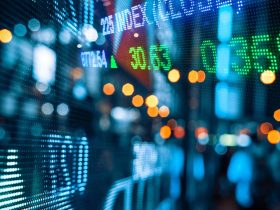
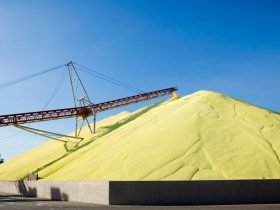

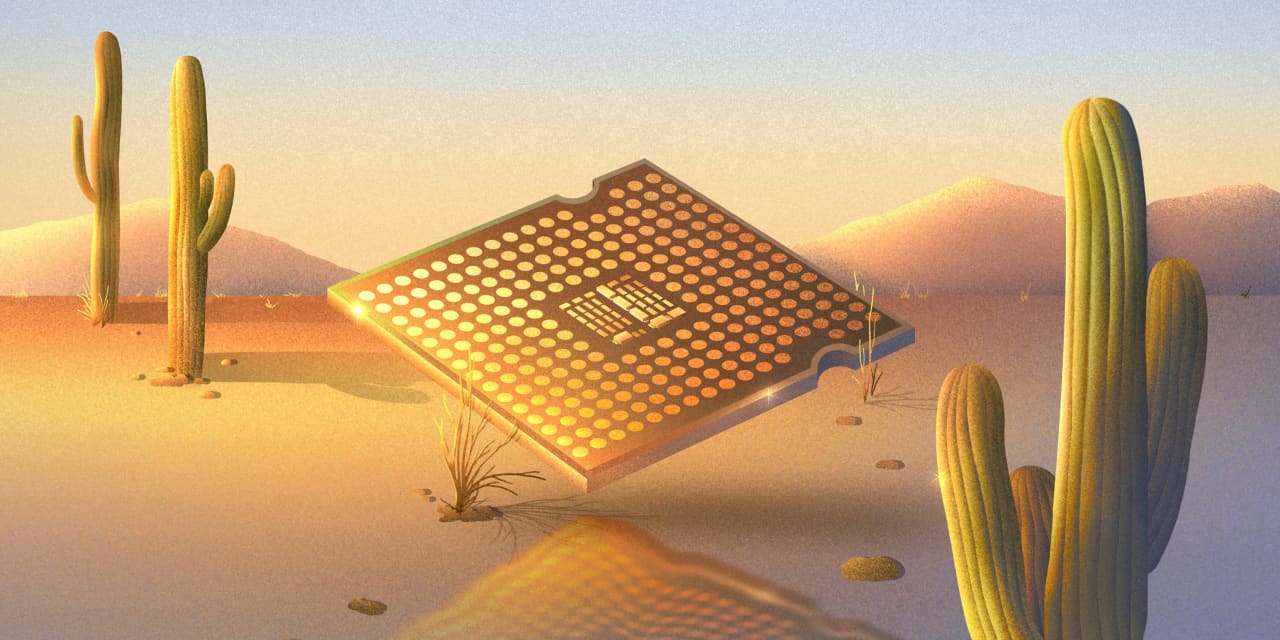
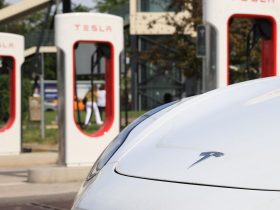

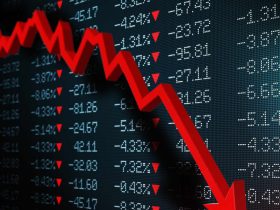


Leave a Reply